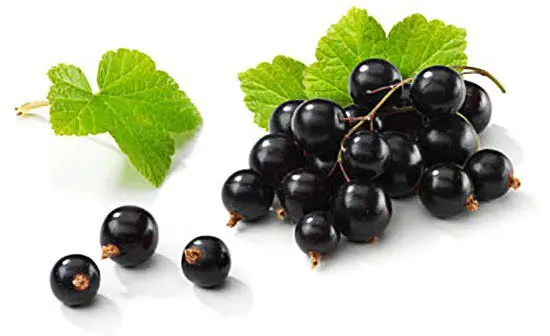Contents
😉 Hello dear friends! In the article “Black currant: benefits and harms to human health” – basic information about the popular berry. Tips on how to preserve currants.
Summer is a great time and berry season. Autumn is the time for vegetables. Don’t waste the opportunity to include seasonal gifts from nature in your diet. Nourish your body with healthy energy and vitamins. Today our heroine is everyone’s beloved, fragrant and juicy Currant.
She is the younger sister of the gooseberry. It comes in black, white and red. It is a wonderful honey plant! Currant bushes grow all over the planet, except Australia and Antarctica. It is surprising that there is several times more ascorbic acid in its unripe fruits than in ripe ones.
Calorie content of black currant
100 grams contains:
- 62 kcal;
- proteins – 1,0 g.
- carbohydrates – 7,2 gr.
- fats – 0,5 gr.
B vitamins, vitamins – A, C, D, E, K, PP. Tannins, pectin, phytoncides, essential oil. Acids: folic, citric, malic, ascorbic, etc. Potassium, iron, manganese, zinc, iodine, phosphorus. Young leaves also contain a large amount of ascorbic acid.

Benefits of black currants
- it is well known that all fruits containing a lot of vitamin C always increase immunity;
- effective help for colds;
- fortifying property;
- contains valuable antioxidants;
- has a diuretic effect;
- indicated for patients in the recovery (postoperative) period;
- suitable for a diet with diabetes mellitus;
- removes the effects of radiation exposure from the body;
- cancer prevention;
- vitamin deficiency, loss of strength;
- beneficial effect for the heart and blood vessels;
- normalizes blood pressure;
- increases hemoglobin (iron);
- pectins remove bad cholesterol from the body;
- removes excess uric acid;
- excellent face masks.
Black currant: contraindications
- allergy;
- with increased acidity of the stomach;
- gastritis or peptic ulcers;
- with thrombophlebitis, thrombosis;
- hepatitis;
- pregnant women should limit the consumption of berries (15 pieces per day will be enough);
- do not overeat! This can provoke increased blood clotting. Enough 20 berries per day and there will be no problems.
The benefits of black currant leaves
- the uniqueness of this plant is the usefulness of the leaves. In terms of the content of vitamins, they are not inferior to the fruits of the bush;
- the leaves are used as an antiseptic, anti-inflammatory and tonic;
- a decoction of healing leaves – an excellent cure for anemia, a mild laxative, diaphoretic;
- aromatic tea from dried leaves will help in winter against colds, and in spring with vitamins;
- experienced housewives use fresh leaves when preserving various vegetables.
How to save currants
It is clear what is healthier than berries from a bush! Our task is to preserve the “storehouse of vitamins” for the long winter. Here are the best options for how not to lose the beneficial properties of currants:
1. Grind the currants with sugar in a 1: 1 ratio without boiling!
2. Or freeze. All vitamins are in place.
Before freezing, you need:
- Sort out the whole currant, remove the twigs, various “garbage”.
- Rinse with water.
- Line evenly on a paper or cloth towel to remove moisture.
- Arrange the dried berries in plastic bags for freezing.
- Place the “valuable cargo” in the freezer.
Do not re-freeze the berries after defrosting!
Try freezing 1-2 kg of berries. In winter, they will be indispensable for breakfast (added to cereals). For tea, you can wrap currants in a pancake, and a spoonful of honey on top – delicious! Delicious feast!
Video
This video, “Black Currant: Health Benefits and Harm,” provides additional information to the article.
Friends, leave comments, additions, advice on the topic “Black currant health benefits and harms”. 😉 Stay always healthy, cheerful and beautiful!










